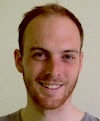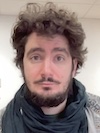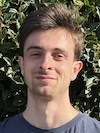Modartt: MOdels and Data for ARTs and Technology
Modartt is a company that develops and provides software and consulting services for artistic and technological applications. Modartt also supports the KIViR project (Keyboard Instruments Virtual Restoration), offering digital restorations and copies of historical keyboard music instruments present in museums.
The Pianoteq model (patent No. US 7,915,515 B2) has been developed in the prestigious Institute of Mathematics of Toulouse, at INSA, Toulouse, France. It simulates acoustic pianos (from historical to contemporary), electric pianos and chromatic percussions. It is an innovating tool for music creation. It can be useful to music teachers by providing a deeper insight in the piano mechanism, and also to piano manufacturers and piano tuners for simulation and training purposes. MODARTT is open to partnerships for adapting Pianoteq to other devices or applications.
Pianoteq was created in 2006. The idea of piano modelling was not new, but no relevant solution had been found until that time. Pianoteq is the very first piano where the sound is computed via a detailed physical model involving the hammers, the strings and the soundboard. It is thus the first truly modelled piano.
The secret of Pianoteq
The Pianoteq history is strongly connected to the outstanding career of P. Guillaume, who, so to speak, had three lives in one.
In a first life he was a high level expert in piano tuning and piano restoration. He worked with prestigious artists like Maria João Pires and Alicia de la Rocha.
Then at age 30, he started a second life with basic studies in mathematics and succeeded brilliantly in the prestigious French Agrégation competition. He earned in a very short time the title of Doctor in Applied Mathematics degree, then became a full professor, and the Director of the Department of Mathematics of INSA, Toulouse, France.
The adventure of Pianoteq started when Philippe Guillaume tuned his first piano and when he wrote his first mathematical model.
The third life of Philippe Guillaume is devoted to developing and promoting Pianoteq.
With the help of his colleagues and a carefully chosen team of experienced musicians, the complex instrument step by step turned into a vivid and convincing piano simulation which makes it the very first piano of its kind.
Our team

Conception of the physical model by Pr. P. Guillaume. Before his current career within applied mathematics, he was a piano tuner and restorer. His interest in piano modelling resulted in what we call the fourth piano generation.

Software research and development by Dr. J. Pommier mathematician and engineer, who implemented the real time physical simulation, resulting in a vivid instrument.

Sales, support and beta testing by MsBA N. Fogwall. With his knowledge in digital pianos he assists in product development and business analysis.

Website, design and SQA by Cp.E G. Joly. Engineer and musician, with his knowledge in Computer Aided Music he assists in product research, development and quality assurance.

Research on the piano model, research and development of new instruments and numerical methods by Dr. J. Chabassier, mathematician and engineer. Her thesis on piano physical modelling gave her a global understanding of the underlying structural and acoustical mechanisms of instruments as well as an expertise in numerical analysis.

Research on the organ model and software development by Dr. R. Auvray, acoustician and engineer. Extending the research done during his thesis on flute-like instruments, he works on the development of physically modelled wind instruments.

Research and engineering regarding the piano model and other instruments by Dr. R. Tournemenne. He helps to broaden Modartt software using his skills ranging from (Psycho)Acoustics to Numerical Methods and Experimental Science.

Research and engineering regarding the organ model and physically modelled wind instruments by Dr. X. Morel, engineer and musician. His skills ranging from computer-assisted music to numerical methods help to broaden Modartt softwares.

Research and development on pianos and more by Dr. A. Thibault. He combines his expertise on mathematical modelling and numerical simulations with his taste for sound design and computer music.

Research and engineering regarding the piano model and other instruments by Dr. G. Castera, engineer and musician. His thesis about the physical modelling and numerical simulation of the piano gave him a solid comprehension of the vibro-acoustic characteristics of stringed instruments.
